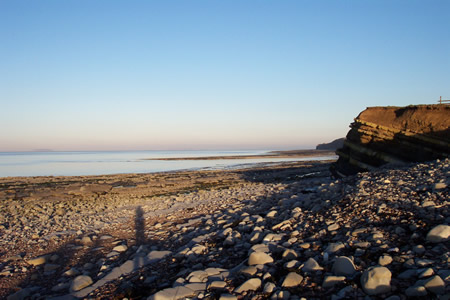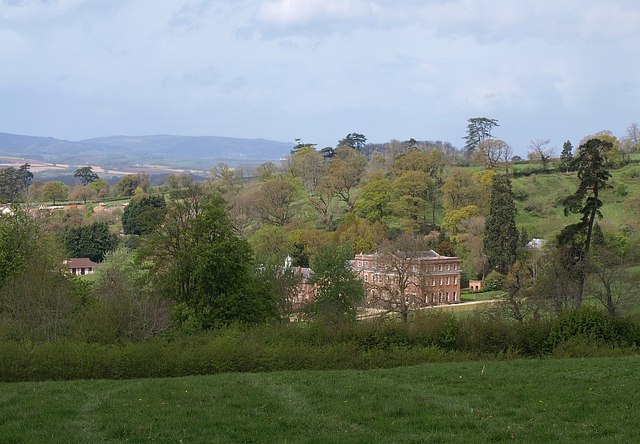In Pursuit of Spring - The Grave of Winter.
The final Chapter of In Pursuit does what it ought:it contains elements of the whole before bringing the book to a satisfying end with a surprising image. It is in fact a reprise: he had arrived at Kilve, his destination, the night before the chapter opens, but is having a look further afield before turning for a train station and home.
quantocksonline |
| Kilve Beach |
There is a long diversion, similar to the early one on clay pipes, on the subject of waterproofs. Or rather not-waterproofs. We have certainly an advantage over Thomas as we do have garments that are both waterproof, light, easy to walk in and don't tear - something he thought would never be possible.
And a shorter one about local biscuits especially Half-Moon biscuits.
Birds - A thrush, starlings and 'The end of rain as I hoped, was sung away by missel-thrushes in the roadside oaks, by a chain of larks' songs which much have reached all over England.' Seagulls, rooks.
Missel-thrush

Remarkable individuals - road-menders: 'the corduroys of one were stained so thoroughly by the red mud of the Quantocks, and shaped so excellently by wear to his tall spare figure, that they seemed to be one with the man.'
the 'two old men sat in the small settle at the fireside talking of the cold weather, for so they deemed it. Bent, grinning old men they were, using rustic, deliberate grave speech.'
Flowers -'tall arum, nettle, and celandine, and one plant of honesty from the last cottage garden.'
 Honesty
HonestyAt the same time he is travelling, looking west.
 geograph.org geograph.org |
Crowcombe Court: 'the sun was bright.' Now a wedding venue as are very many of the properties on his route. |
It was at the inn there he met the two old men. Then on to Cothelstone.

'I saw through the trees the gray mass of
Cothelstone Manor-house beside its lake, and twelve miles off in the same
direction the Wellington obelisk on the Black Down Hills. A stone seat on the
other side of the trees commands both the manor house beneath and the distant
obelisk. The seat is in an arched-over recess in the thickness of a square wall
of masonry, six or seven feet in height and breadth. A coeval old hawthorn,
spare and solitary, sticks out from the base of the wall. The whole is
surmounted by a classic stone statue of an emasculated man larger than human,
nude except for some drapery falling behind, long-haired, with left arm
uplifted, and under its feet a dog; and it looks straight over at the obelisk. I
do not know if the statue and the obelisk are connected, nor, if so, whether the
statue represents the Iron Duke, his king, or a classic deity; the mutilation is
against the last possibility. Had the obelisk not been so plainly opposite, I
should have taken the figure for some sort of a god, the ponderous,
rustic-classic fancy of a former early nineteenth-century owner of Cothelstone
Manor. The statue and masonry, darkened and bitten by weather, in that high,
remote, commanding place, has in any case long outgrown the original conception
and intention, and become a classi-rustical, romantic what-you-please, waiting
for its poet or prose poet. '
(The blog in-pursuit-of-spring has fine pictures and extracts on this.)
 |
| Cothelstone Hill
'a dome of green and ruddy grasses in the south-east, sprinkled with thorn trees and capped by the blunt tower of a beacon. The primrose roots hard by me had each sufficient flowers to make a child's handful..
Turning to the left again, when the signpost declared it seven and three-quarters miles to Bridgewater, I found myself on a glorious sunlit road without hedge, bank, or fence on either side, proceeding through fern, gorse, and ash trees scattered over mossy slopes.'
The final pages are too evocative, too expressive of the spirit of the whole, to cut. The bluebells, dropped by the side of the road, the rainbow, the distant views to Wales and the close -'The million gorse petals were like flames sown by the sun.'
The Grave of Winter.
Here they are as Thomas would have proof-read them in 1913, his saddest, most desperate year. What courage and strength he had.
------------------------------------------------------------------------------------------------------------------------------------------
More details on
Well, I didn't care for it much, but I was reviewed in the Times Literary Supplement last week.
Saturday
8th June,
Steep, near Petersfield, Hampshire
The Edward Thomas Fellowship has organised an "extra" walk for the more hardy
walkers. In the countryside around Steep (where Edward Thomas lived, 1906-16),
Stephen Turner will lead an all-day strenuous walk of between 8 and 10 miles,
including some steep climbs. Walking boots or stout comfortable shoes will be
essential.
Meet at Bedales School car park at 10.00 a.m. Most of the walkers will have lunch at a local inn; but there is a suitable picnic spot nearby for those wishing to bring a packed lunch. There will be readings along the route. The walk will probably be completed by 5 p.m. This event is open to non-members, but it is limited to about 20 participants. Places must be booked by Monday 3rd June. A pub lunch may also be booked when reserving a place on the walk. Please book by telephone on 01252 - 810 852 or email at stephenjturner1@aol.com. |



.jpg)

I have only recently discovered your excellent blog, and just wanted to leave a brief note to say keep up the good work. I have a lot of reading to do to get up to date, but how wonderful it is to discover someone who seems to be as fascinated (my husband uses the word "besotted" for some reason) by Edward Thomas as I am.
ReplyDeleteHello Bovey Belle - so pleased to know of another Edward Thomas enthusiast. I have heard of Codlins and Cream but not your Dust on Nettles Blog. 'Nettles' is in a way his very first 'published' poem as it appeared in the Frost children's typed 'magazine', the Bouquet, which I saw in the Dymock Poets archive, Cheltenham. I'm not sure that Edna Longley, who knows everything Thomas, knew that as she doesn't mention it. I'll look out for you from now on.
ReplyDeleteAbout Henry Williamson and Edward Thomas. If you can contact me directly there is more to say. info@streetbooks.co.uk
Delete